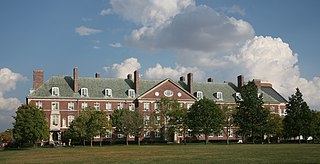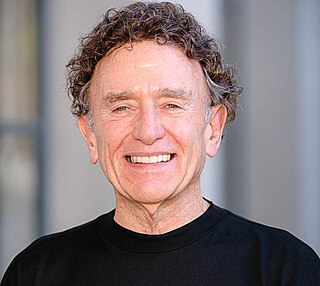
The department of plant and microbial biology is an academic department in the Rausser College of Natural Resources at the University of California, Berkeley. The department conducts extensive research, provides undergraduate and graduate programs, and educates students in the fields of plant and microbial sciences with 43 department faculty members.
The College of Agricultural and Environmental Sciences (Ag&E) is one of four colleges of the University of California, Davis. Established in 1922, it offers degrees in 27 undergraduate majors and thirty-three graduate groups. As of January 2014, the College has been overseen by Dean Helene Dillard.

The University of Agriculture (UAF) is a public research university in Faisalabad, Pakistan. It's the largest university of Pakistan by area with covered area of 2550 acres as compared to Punjab University's 1800 acres which is the second largest.

The University of Illinois Urbana-Champaign's College of Agricultural, Consumer and Environmental Sciences (ACES) is part of the University of Illinois Urbana-Champaign and is considered by some to be the top school of agriculture-related sciences in the world. Most of the ACES buildings are located on the South Quad. In terms of staff, ACES has 186 tenure-system faculty, 78 specialized faculty, 26 postdoctoral researchers, 493 academic professionals, 565 civil service staff, 323 assistants, and 956 hourly employees.

Gordon Rausser is an American economist. He is currently the Robert Gordon Sproul Distinguished Professor Emeritus, Dean Emeritus, at Rausser College of Natural Resources and more recently, a professor of the graduate school at the University of California, Berkeley. On three separate occasions, he served as chairman of the Department of Agriculture and Resource Economics, served two terms as Dean of the Rausser College of Natural Resources, and has served on the board of trustees of public universities and one private university. Rausser has been appointed to more than 20 board of directors of both private and publicly traded companies, including chairman of several of such boards.
The College of Food, Agricultural and Natural Resource Sciences (CFANS) is one of seventeen colleges and professional schools at the University of Minnesota. The College offers 14 majors, 3 pre-major and pre-professional majors and 26 freestanding minors for undergraduate students and a variety of graduate study options that include master's, doctoral and joint degree programs.

The University of Florida College of Agricultural and Life Sciences (CALS), founded in 1964, is a college of the University of Florida.
North Carolina State University's College of Agriculture and Life Sciences (CALS) is the fourth largest college in the university and one of the largest colleges of its kind in the nation, with nearly 3,400 students pursuing associate, bachelor's, master's and doctoral degrees and 1,300 on-campus and 700 off-campus faculty and staff members.
The College of Natural Resources and Environment at Virginia Tech contains academic programs in forestry, fisheries, wildlife sciences, geography, and wood science. The college contains four departments as well as a graduate program in the National Capital Region and a leadership institute for undergraduates.

Vietnam National University of Agriculture, until 2014 Hanoi University of Agriculture (HUA), is an education and research university specializing in the agricultural sector. The university is located in Trau Quy town, Gia Lam district, a Hanoi suburban area, about 12 km far from Hanoi city centre.
The Faculty of Land and Food Systems (LFS) is one of the three founding Faculties at the University of British Columbia (UBC) in Vancouver, British Columbia, Canada.

David Zilberman is an Israeli-American agricultural economist, professor and Robinson Chair in the Department of Agricultural and Resource Economics at the University of California, Berkeley. Zilberman has been a professor in the Agricultural and Resource Economics Department at UC Berkeley since 1979. His research has covered a range of fields including the economics of production technology and risk in agriculture, agricultural and environmental policy, marketing and more recently the economics of climate change, biofuel and biotechnology. He won the 2019 Wolf Prize in Agriculture, he is a member of the US National Academy Science since 2019, was the President of the Agricultural and Applied Economics Association (AAEA), and is a Fellow of the AAEA, Association of Environmental and Resource Economics, and the European Association of Environmental and Resource Economics. David is an avid blogger on the Berkeley Blog and a life-long Golden State Warriors fan.
George Garrett Judge is an American econometrician and Professor in the Graduate School in the Department of Agricultural and Resource Economics in the UC Berkeley College of Natural Resources.

The Lilongwe University of Agriculture and Natural Resources (LUANAR) is a university outside Lilongwe, Malawi. It was formed in 2011 by a merger between Bunda College of Agriculture of the University of Malawi and Natural Resources College (NRC).

Elisabeth Sadoulet is an economist and Professor of Agricultural and Resource Economics at the University of California, Berkeley who has carried out field research in China, India, Latin America, and sub-Saharan Africa. Sadoulet was the editor of the World Bank Economic Review from 2010 to 2013, and is a fellow of several scholarly associations in the fields of agriculture and economics.

The University of Connecticut's College of Agriculture, Health, and Natural Resources (CAHNR) is the oldest of UConn's fourteen colleges, and teaches a wide range of subjects. It is the oldest agricultural school in Connecticut, originally established with two purposes, conducting agriculture research and teaching practical skills to modernize farming. The college describes its mission as working "toward a global sustainable future." To that end, besides conducting research and teaching, the college's faculty also work together with Connecticut communities on projects related to food systems, agriculture, human health, nutrition and physical activity, and environmental science.

Hilgard Hall is a historical building in Berkeley, California. The Hilgard Hall was built in 1917. The building and it site was listed on the National Register of Historic Places on March 25, 1982. Hilgard Hall is named for pedologist, Eugene W. Hilgard. Hilgard was the first dean of the University of California College of Agriculture from 1874 to 1904 at the University of California Berkeley. Eugene Hilgard also founded the University Agricultural Experimental Station. Hilgard Hall was designed by John Galen Howard in a Neo-classical design and Northern Italian Renaissance style. The Agricultural Complex has three buildings, Hilgard Hall, Wellman Hall, and Giannini Hall.

Giannini Hall is a historical building in Berkeley, California on the University of California Berkeley.. The Giannini Hall was built in 1930. The Giannini Hall building was listed on the National Register of Historic Places on March 25, 1982. The Giannini Hall was designed by architect William Charles Hays, with University of California, Berkeley. The Agricultural Complex has three buildings, Hilgard Hall, Wellman Hall, and Giannini Hall. Giannini Hall was funded by a donation from the Bancitaly Corporation, which also funded the The Giannini Foundation of Agricultural Economics in honor of Amadeo P. Giannini. Amadeo Pietro Giannini (1870–1949) was an Italian-American banker, he founded the Bank of Italy, which later became Bank of America. In honor of his Italian roots, the had old Tuscan farm style. Giannini Hall as buildings built around a center courtyard. The garden at the hall used stone pines, cypresses, and olive trees. Giannini Hall hold the agriculture research library.














